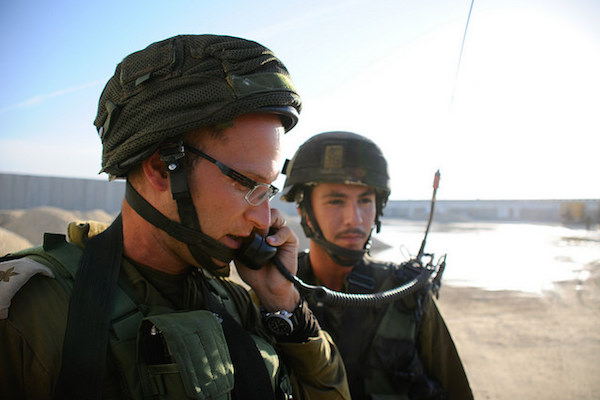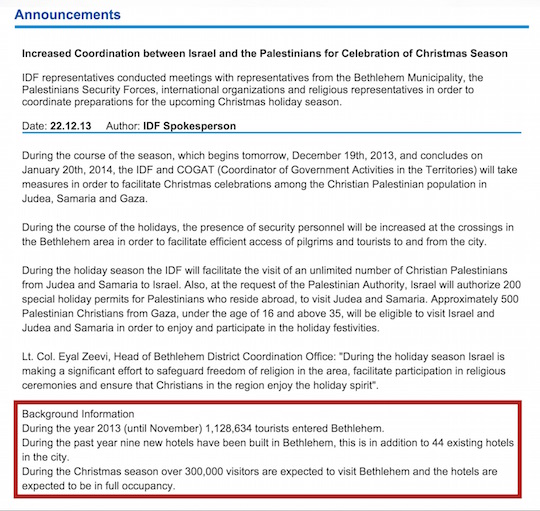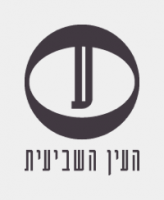Security agencies in Israel love to give reporters information without attribution, refusing to stand behind what they say. Every once in a while, they publish the same information on their official websites.
By Ido Kenan

In July 2011, a year after the Mavi Marmara flotilla incident, in which passengers attacked Israeli forces who then killed 10 of them, Turkish organization IHH planned a second flotilla to Gaza. In an attempt to preempt the second flotilla, the IDF’s Coordinator of Government Activities in the Territories (COGAT), Maj.-Gen. Eitan Dangot, approved the transfer of medical equipment donated by the Turkish Red Crescent to Gaza. At the same time, somebody was trying to do away with Israel’s responsibility for the medical crisis in Gaza, and announced that, “coordination of the transfer of the Turkish aid is taking place on a daily basis and not because of the medical supply crisis in Gaza, which is a result of the internal Palestinian conflict in its medical system, to which Israel is not party.”
Who is behind that claim? On Israel’s Arutz 7, for example, the quote was attributed to a “military source.” Israel’s Channel 10 published the claim in its own words, without any quotation marks, and preceded by, “the IDF explained.” Originally, the quote was sent to journalists by the IDF under the contradictory classification of “OTR – In the reporter’s name.” As Rafi Mann explained on The 7th Eye website in an article on the rules of attributing information to sources (Hebrew), “In the reporter’s name” is equivalent to the American term “Deep Background,” a ground rule under which you may publish the information, but without attributing it to the source who gave it to you; OTR, or off the record, is information that is intended only for the journalist’s ears, and not for publication. On the surface of things, both news outlets broke the rules — they published the quote, and thereby broke the OTR rule; and they attributed it to a military source, thereby breaking the ‘in the reporter’s name’; rule.”
Security agencies in Israel love to give journalists information on the condition that they not be identified as the source. Ran Binyamini wrote about it on The 7th Eye in 2006 (Hebrew): “Every once in a while the Shin Bet sends journalists messages through the IDF Spokesperson under the strange headline, ‘information in the reporter’s name’: information about Palestinians who have been arrested or assassinated after involvement in terrorism (the press releases explain what they planned and what they said under interrogation). The reporters are asked to publish the information in their own names — and not to attribute it to the security officials who are behind it.” So do journalists cooperate with this unacceptable practice? Binyamini explained that, “the lack of leaks creates a situation in which reporters and analysts become reliant on the official messaging of the Shin Bet and are unable to verify the information they report in their news broadcasts.”
I was caught up in the same system recently when I tried to find out who was behind a “most severe” emergency warning sent out through an official cellular messaging service in the Jerusalem area in mid-February. The IDF Spokesperson sent me a response, all of which was to be written without attribution and OTR, and nothing for quotation or attribution. In order words, I actually received the information that I requested, but officially, the IDF did not issue a response. That wasn’t enough for me, I was supposed to publish the information and at the end of the article, write that, “the IDF declined to respond.”
The attempt to hide the source of the information was especially ridiculous. On ground rules of “information in the reporter’s name,” an IDF spokesperson told me about “Personal Message,” the IDF Home Front Command’s (HFC) system for sending out warnings to the public. Information about “Personal Message” is available to anyone with an Internet connection, on the Home Front Command’s website. “Off the Record,” an IDF spokesperson told me that it was the police who sent out the message through the HFC’s system. That information, including the name of the police officer who sent out the warning message, was given to me in a telephone conversation by an IDF spokesperson with whom I spoke, and without any stipulations about attributing the information to the IDF Spokesperson.
But let’s get back to the anonymous quote about the medicinal crisis in Gaza. How do I know that the IDF sent that message to journalists? Because the IDF itself published it. On the official IDF website, the COGAT spokesperson published the press release about approving the transfer of medical equipment, at the end of which was a quote under the header: “OTR – Information in the reporter’s name,” in bold and underlined. In other words, not only did the spokesperson break the rule it itself set, it also drew readers’ attention to the fact that the quote wasn’t supposed to be attributed to it. The COGAT spokesperson published the press release on its site in Hebrew and but also in English (only marked OTR this time), so that even those readers who don’t read Hebrew could know who the anonymous source was.
In the past, IDF press releases would only reach reporters, and not the wider public. Since the army started using the Internet as a public relations platform, however, its press releases are also published on its official web page. On a previous version of the IDF Spokesperson’s website it was possible to find hundreds of of press releases that included the words “information in the reporter’s name,” but access to them was restricted to those with a password, which are apparently given to military affairs reporters. A search of the IDF Spokesperson’s current Hebrew website returns a few press releases in which the IDF breaks its own attribution rules, all while confusing and failing to differentiate the various rules that it itself sets. Those press releases are not password protected; they are available to any web surfer.
An IDF Spokesperson press release about the conclusion of air-borne activities fighting the 2010 Carmel fire includes OTR information, according to which, “the Air Force is prepared to receive additional planes and helicopters slated to arrive today from additional countries, including Switzerland, Russia, Holland, France, Azerbaijan and Romania. Additionally, a large American firefighting aircraft will land at Ben-Gurion Airport.”
The COGAT website still has a press release from 2013 about preparations for the Christmas holiday, which, under an OTR heading, includes tourist information — the number of tourists, of hotels, and the number of hotel rooms in Bethlehem, and even an anonymous quote: “According to Palestinian tourism officials, hotels are expected to be at full capacity during the Christmas holidays.” It’s not clear why such information would be sent out under the condition that it not be published. In the English-language version of the same message, which includes some extra information and leaves out some of the parts included in the Hebrew press release (and without a quote from Palestinian officials), the information is transmitted as “Background Information,” which can be published.

Even when the IDF Spokesperson doesn’t accidentally reveal the “in the reporter’s name” or OTR information on its own website, that information has a way of reaching the public through other media outlets and websites that — either negligently or intentionally — publish the IDF press releases in full, without removing the OTR information. Take for example, a press release published during “Operation Protective Edge” about the events of one night in mid-July, that included only numerical data about attacks against terrorist targets and operatives. However, a copy of the press release published on the “Live News” Facebook page reveals that the original press release was significantly longer. Under “information in the reporter’s name,” descriptions of the terror targets are detailed. The IDF Spokesperson also wrote, without taking responsibility for what it was asking others to publish without attribution, that Hamas is “recruiting large parts of the assets and activists in its ranks for military operations, while blurring the distinction between the civilian population and military targets. That lack of distinction of military activities turns the many Hamas activists and assets, including the Interior Ministry, into legal [military] targets according to international law.”
This is where the IDF’s unsuccessful attempts at shirking responsibility for the information it sends our reaches its most ridiculous levels, courtesy of a B’Tselem report published in January of this year — “Black Flag: The legal and moral implications of the policy of attacking residential buildings in the Gaza Strip, Summer 2014.” The report quotes information released as “information in the reporter’s name” about “the operational infrastructure of Mahmoud al-Za’ar, who serves as a member of the political bureau in the Gaza Strip, and the head of the Political Committee and Foreign Liaison Department.” Quite naturally, the B’Tselem report attributes the information to the IDF Spokesperson.
Response: That’s just how things work
In response to our request for comment, a soldier named Chen from the IDF Spokesperson’s Office clarified that the COGAT spokesperson is not part of the IDF Spokesperson’s Office. Regarding off the record information, according to Chen, the IDF Spokesperson’s classification of “OTR” is not information that is forbidden to publish, but information that can be published without attributing it to a source. According to her, “when we send information OTR, it is simply extra information without attribution. It’s as if we are answering questions in the statement, and passing along additional information to be expand the article. We don’t compel anybody to not publish it, it’s simply the way of doing business, like you have in the international press. In the rest of the Israeli press […] they usually insert it as some extra words on the page under their name. It’s not that he is forbidden from publishing it, it’s just the way it’s done. When I pass along information about something attributed to military officials and it’s not for quotation, then it’s not for quotation.”
Two questions that we sent to the IDF Spokesperson were not answered: What does the IDF Spokesperson do to prevent violations of the rules of attribution and the attribution of information to the IDF against its will by journalists and others who publish it; and why does the IDF Spokesperson give journalists information that it is not willing to take responsibility for and stand behind.
Read this article in Hebrew on The 7th Eye.
Correction:
Nine people were killed onboard the ‘Mavi Marmara.’ A tenth passenger died a number of years later. This article has been corrected to reflect the correct number of casualties in the incident.

